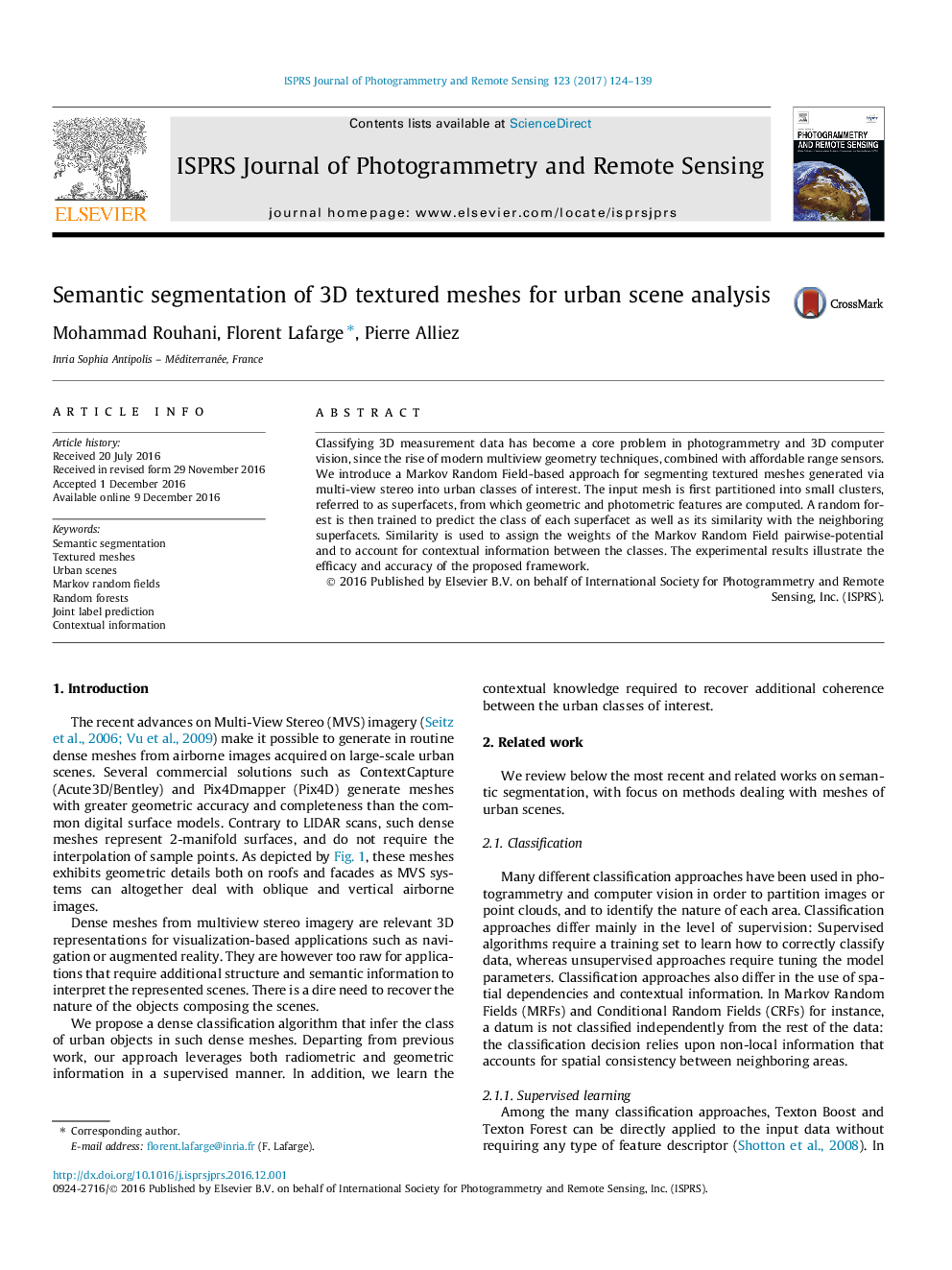| Article ID | Journal | Published Year | Pages | File Type |
|---|---|---|---|---|
| 4973004 | ISPRS Journal of Photogrammetry and Remote Sensing | 2017 | 16 Pages |
Classifying 3D measurement data has become a core problem in photogrammetry and 3D computer vision, since the rise of modern multiview geometry techniques, combined with affordable range sensors. We introduce a Markov Random Field-based approach for segmenting textured meshes generated via multi-view stereo into urban classes of interest. The input mesh is first partitioned into small clusters, referred to as superfacets, from which geometric and photometric features are computed. A random forest is then trained to predict the class of each superfacet as well as its similarity with the neighboring superfacets. Similarity is used to assign the weights of the Markov Random Field pairwise-potential and to account for contextual information between the classes. The experimental results illustrate the efficacy and accuracy of the proposed framework.
